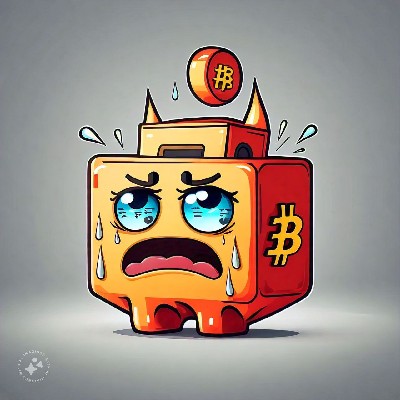Textbook Bullish Flag – Ready for Liftoff 📈🚀
In the world of stock market trading,
Textbook Bullish Flag – Ready for Liftoff 📈🚀
In the world of stock market trading, technical analysis plays a critical role in$PUMP helping traders predict future price movements based on past patterns. One such pattern that stands out for its reliability and predictive power is the bullish flag pattern. 🏁💹
For both novice and experienced traders, the bullish flag offers a clear and actionable signal of potential upward price movement after a strong rally. In this article, we’ll break down the bullish flag pattern, its characteristics, how to spot it, and how to trade it. By the end, you'll have a solid understanding of how this pattern works and how to capitalize on it. Let’s dive in! 🏊♂️📊
What is a Bullish Flag? 🏴
A bullish flag is a continuation chart pattern that suggests the price of a security is likely to continue its upward trajectory after a brief consolidation or pullback. It is called a "flag" because, visually, it looks like a flag on a pole, with the strong rally representing the pole, and the subsequent consolidation forming the flag.
Key Components of a Bullish Flag 📏
The Flagpole 📍: This is the initial sharp upward movement (also called the impulse move) that signals strong bullish momentum. This part of the pattern is typically marked by a steep, vertical climb, showing that buyers are in control.
The Flag 🏴: After the strong rally, the price begins to consolidate. Instead of continuing straight upward, it moves sideways or slightly downward in a slanted direction. $PUMP This consolidation phase forms the flag. It is crucial that the flag forms at a relatively shallow angle, indicating that the pullback is not too severe and the bulls are just taking a short breather.
The Breakout 🚀: The final step of the bullish flag pattern is the breakout, where the price breaks above the upper boundary of the flag. This breakout confirms that the pattern has completed, and the price is likely to resume its upward movement.
How to Spot a Bullish Flag 🧐
1. Look for a Strong Uptrend 📈
A bullish flag can only form after a significant price increase. So, the first step is to identify a sharp price rally or a "flagpole." This rally should ideally be at least 20-30% in price movement over a relatively short time.
For instance, if a stock price jumps from $50 to $70 in a matter of days, that’s the perfect setup for a flag to form. The steeper the pole, the better!
2. Identify the Consolidation Phase 📉
After the strong move upwards, watch for a period of consolidation. This is the flag. It is usually marked by lower$PUMP volatility and a slight downward drift or a sideways movement. The price will create a small rectangular or parallelogram shape on the chart, typically angled downwards at a mild angle (between 30° and 60°).
3. Watch for Volume Analysis 📊
Volume plays an important role in confirming the pattern. During the flagpole (initial upward move), volume should be strong, as many traders are jumping in to ride the price surge. During the flag portion, volume should decrease as the consolidation phase takes place, indicating a temporary pause in the market. Finally, when the price breaks out of the flag, volume should increase once more, signaling that momentum is returning.
4. Confirm the Breakout 🚨
The breakout happens when the price rises above the upper boundary of the flag, signaling that the bullish trend is likely to resume. Traders often set entry points just above the flag's resistance level to catch the breakout.
Why Do Bullish Flags Work? 🤔
The bullish flag is a powerful pattern because it reflects the psychological state of traders in the market. Here's why it works:
Market Sentiment 🧠: After a strong price move, traders often take profits, causing the price to temporarily pull back or consolidate. However, the underlying sentiment remains bullish, as buyers are still willing to push the price higher once the consolidation phase ends.
Supply and Demand ⚖️: During the consolidation phase, there is a temporary balance between buyers and sellers. The flag forms when supply temporarily outstrips demand, causing the price to stall. But as soon as demand picks up again and exceeds supply, the price breaks out, continuing the upward trend.
Investor Psychology 🧑💼: The flag pattern demonstrates a healthy balance between optimism and caution. Investors who are looking to buy on the pullback are waiting for the breakout, while sellers are hesitant to push the price much lower. When the breakout occurs, it signals that the sellers have exhausted their control, and buyers are once again in control of the market.
How to Trade a Bullish Flag 📈💵
1. Identify the Flagpole and Consolidation Phase 🏁
The first step in trading a bullish flag is to identify the flagpole and the consolidation phase. Once you've spotted a strong upward movement followed by a shallow pullback or sideways movement, you're likely looking at a bullish flag.
2. Set Your Entry Point 🚀
Once the flag forms, you’ll want to set an entry point slightly above the resistance line of the flag. This allows you to enter the trade once the price breaks out of the consolidation phase. A good rule of thumb is to wait for the breakout to be confirmed with higher volume, as this provides additional confirmation that the trend is resuming.
3. Determine Your Stop-Loss 🛑
Every trade needs a risk management strategy. For a bullish flag, you’ll want to place your stop-loss order below the flag’s lower boundary. This ensures that you exit the trade if the price moves against you, limiting your potential loss. The stop-loss should be placed just below the lowest point of the consolidation.
4. Set Your Profit Target 🎯
The target for a bullish flag is typically calculated by measuring the length of the flagpole and projecting that same distance from the breakout point. For example, if the flagpole was 10 points long and the price breaks out at $100, your target would be $110.
However, some traders prefer to trail their stop-loss to lock in profits as the price continues to rise. This allows them to capture as much upside as possible if the trend keeps going.
Example of a Bullish Flag in Action 📉💡
Let’s take a closer look at an example to understand how the bullish flag pattern works in real life.
Imagine a stock, XYZ Corp, which has been trading between $50 and $60 for several weeks. Then, the stock suddenly jumps to $90 over a few days, forming the flagpole. After that, the stock moves sideways, between $85 and $90, creating the flag.
Traders now wait for the breakout above $90. Once the stock moves above this level, confirming the breakout, traders enter the position and set their stop-loss just below the flag’s lower boundary, perhaps at $84. They then target a price of $110 (using the length of the flagpole as their measure for the price move).
If the breakout occurs with high volume and the stock continues to rise, traders can enjoy the profits from this upward trend. 🚀💰
Common Pitfalls to Avoid ⚠️
While the bullish flag pattern is a great tool, it's not foolproof. There are a few common mistakes traders make when attempting to trade this pattern:
Ignoring Volume 🔇: Volume is crucial in confirming the bullish flag pattern. Without strong volume during the breakout, the pattern might not be valid.
Premature Entry 🕰️: Some traders rush to enter as soon as the flag forms, only to see the price move back into the consolidation zone. It’s important to wait for the actual breakout above the flag’s resistance level.
False Breakouts ❌: Sometimes, the price might briefly break above the flag’s resistance but then reverse and fall back down. Traders must be cautious about false breakouts. Using stop-loss orders effectively helps mitigate this risk.
Final Thoughts 🧐💡
The bullish flag pattern is a powerful tool for traders looking to profit from strong upward price movements in the stock market. It’s relatively easy to identify, especially when combined with volume analysis and a clear understanding of chart patterns. When you see the flagpole form, and the price begins to consolidate in a flag pattern, you know the market is taking a breather before the next big move up.
With proper risk management, patience, and discipline, traders can capitalize on these patterns and enjoy the potential rewards of the next liftoff 🚀!
So, next time you spot a bullish flag on your chart, make sure to analyze the situation carefully, wait for the breakout, and get ready for the ride! 😎📈

Hedera (HBAR) Market Update – Bearish Bias Amid Volatility
Current Range: $0.16 – $0.18
Trend: Bearish bias with potential support near $0.145
Key Support: $0.145 – $0.14
Key Resistance: $0.18 – $0.19
Volume: Moderate, with upcoming volatility expected
Overview: Hedera (HBAR) has been facing significant market pressure, largely due to a correlation with Bitcoin and the general uncertainty in the broader market. While recent partnerships, such as the extended collaboration with Chainlink and involvement in a potential TikTok acquisition through the Hedera Foundation, could have been bullish, these haven't yet moved the price significantly.
Key Highlights:
Hedera’s recent technical breakdown saw a strong rejection from the fair value gap around $0.18, which led to further downward pressure.
Despite news of strategic partnerships, HBAR’s price action has been bearish, reflecting a broader market trend and investor sentiment.
The price is now navigating through key support levels, with a critical range between $0.16 and $0.14. A drop below $0.145 could signal further bearish movement.
Technical Outlook:
Bearish Breakdown: The recent bearish breakdown below $0.18 has triggered imbalance in price action. The absence of a reclaim above $0.18 signals weakness.
Support Zones: The support zone around $0.145–$0.14 looks strong enough to potentially stabilize the price. Short-term volatility is expected, but long-term support at this level could offer a good entry point.
Potential Buy Zone: If price hits the $0.145–$0.14 range, this could present an opportunity for long-term investors looking to accumulate.
Strategy:
For Long-term Investors: $0.14–$0.145 is an important range to watch for buying opportunities. Despite short-term bearish sentiment, this support could offer a solid foundation for future growth.
Traders: Expect volatility in the short term, but the trend is currently leaning towards lower levels. Watch for any reversal signs at the support zones before making new positions.
Conclusion:
The combination of market uncertainty, technical breakdowns, and correlation with Bitcoin suggests that Hedera (HBAR) is likely to face further downward pressure. However, support near the $0.145–$0.14 range could present a potential opportunity for accumulation, making this an important area to watch.
$HBAR
Solana (SOL) to Lose Triple Digits? XRP Ready for Massive Bounce, Shiba Inu (SHIB) Back in Uptrend
The market is becoming more bearish, and Solana is close to a pivotal psychological level. The asset looks perilously close to dropping below the $100 mark, which has not been reached in several months, with prices currently circling $120. For investors hoping for a swift recovery, the chart's lower low formation raises concerns about a sustained downward trend.
A particularly alarming indicator is the increase in bearish volume. The chart shows that red volume bars have been noticeably higher during recent trading sessions, indicating aggressive sell-offs by market participants. With no indication of accumulation or buyer support at the current levels, this increase in downside pressure indicates that bears are firmly in control.
Technically speaking, SOL has continuously failed to rise above its short-term moving averages, such as the 26 and 50 EMA, which are still sloping lower. The fact that the Relative Strength Index (RSI) has fallen below 45 indicates that Solana is more inclined toward oversold conditions, but it lacks the robust bullish divergence that usually denotes a reversal.
SOL should be closely watched at $100 if the selling pressure persists and it loses support at about $110. Panic-selling may increase a confirmed breakdown below that, which could pave the way for a decline toward $90 or even lower.
Is XRP getting ready?
Technical indicators are aligning for a possible reversal, and XRP looks to be preparing for a significant bounce. The asset recently retested the 200-day EMA, which is indicated in black on the chart. By remaining above this crucial level, it is demonstrating resilience. The 200 EMA has historically been a dynamic support level that frequently signals the start of bullish recoveries, particularly when price action levels out around it.
Since testing the $1.94 support zone, XRP has formed a higher low and is currently trading above the crucial psychological and technical level of $2.00, which may signal the beginning of a bullish trend. As buyers regain confidence and start to withstand downward pressure, the candles demonstrate a slow change in sentiment.
The volume profile lends more credence to this scenario. During green sessions, volume has begun to slightly increase despite being relatively moderate, suggesting an accumulation phase. The bullish argument could be strengthened by a persistent volume increase, which would also encourage XRP to retest the upper levels of its current descending wedge.
The next resistance levels to keep an eye on on the upside are $2.28 and $2.37, which were both once support zones but are now resistance. If these are broken, a big breakout from the wedge pattern might occur, which could push XRP back toward $2.60 and higher.
As the market moves out of oversold territory and into a more balanced trading environment, the Relative Strength Index (RSI) is also rebounding and is currently moving in the direction of the neutral 50 line.
Improved momentum indicators, increasing volume and the 200 EMA's strong hold suggest that XRP is ready for a significant recovery. A major rebound might be in the works if the asset keeps drawing bullish interest and the state of the world market holds up.
Shiba Inu recovery incoming?
After a protracted decline Shiba Inu is beginning to show early signs of recovery. Its most recent chart move indicates that the meme coin may finally be back in an uptrend — at least for the time being. The creation of a higher low, which represents a significant structural change on the chart, is one of the most obvious bullish signals today.
This phenomenon frequently marks the start of a trend reversal because it indicates that buyers are purchasing before new lows are reached and absorbing selling pressure. At $0.00001200, which has historically served as a crucial zone of accumulation, SHIB is currently holding firm above the important support level.
SHIB has recovered from this level to $0.00001244, indicating fresh interest in buying. The asset is also emerging from oversold conditions and moving into more neutral territory, as evidenced by the relative strength index (RSI), which is gradually rising and circling 44. An additional positive indication is the increasing volume during the most recent green candles.
This spike in volume demonstrates that the rebound is supported by significant market activity rather than merely a transient price change. Nevertheless, there is still a lot of fierce opposition to Shiba Inu. The 50 EMA is also serving as a dynamic barrier to additional upward momentum, and the next levels to keep an eye on are $0.00001300 and $0.00001357.
The argument for a long-term rally would be strengthened by a breakout above these levels. The current configuration provides a cautiously optimistic outlook even though SHIB's long-term trajectory is still unknown. We may see a more significant change in sentiment if bulls can sustain this momentum and break through adjacent resistance levels.
$BTC $XRP $SOL $SHIB


 Prix le plus bas
Prix le plus bas Prix le plus élevé
Prix le plus élevé 












































Données sociales de LooksRare
Au cours des dernières 24 heures, le score de sentiment sur les réseaux sociaux de LooksRare est de 3, et le sentiment sur les réseaux sociaux concernant la tendance du prix de LooksRare est Haussier. Le score global de LooksRare sur les réseaux sociaux est de 71, ce qui le classe au 238ème rang parmi toutes les cryptomonnaies.
Selon LunarCrush, au cours des dernières 24 heures, les cryptomonnaies ont été mentionnées sur les réseaux sociaux un total de 1,058,120 fois. LooksRare a été mentionné avec un taux de fréquence de 0.01%, se classant au 370ème rang parmi toutes les cryptomonnaies.
Au cours des dernières 24 heures, 258 utilisateurs uniques ont discuté de LooksRare, avec un total de 109 mentions de LooksRare. Toutefois, par rapport à la période de 24 heures précédente, le nombre d'utilisateurs uniques a diminué de 17%, et le nombre total de mentions a augmenté de 5%.
Sur X, il y a eu un total de 1 posts mentionnant LooksRare au cours des dernières 24 heures. Parmi eux, 0% sont haussiers sur LooksRare, 0% sont baissiers sur LooksRare, et 100% sont neutres sur LooksRare.
Sur Reddit, il y a eu 8 posts mentionnant au cours des dernières 24 heures. Par rapport à la période de 24 heures précédente, le nombre de mentions diminué a augmenté de 11%.
Aperçu social
3